Installing and Testing Wi-Fi Antennas TP-Link TL-ANT2408CL. We Strengthen The Wi-Fi Signal
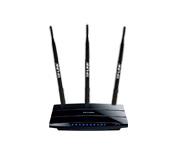
Today we will again touch on a very delicate and painful topic – strengthening the signal of Wi-Fi network. I’ll tell you how you can slightly increase the range of Wi-Fi network by replacing the antennas with more powerful ones, we’ll consider installing TP-LINK TL-ANT2408CL antennas, and of course, we’ll look at the numbers, how much the wireless signal will increase, and whether it will increase at all, after replacing wi-fi antennas on the router.
I suspect that if you’ve come to this page, you’re not happy with the range of wireless coverage that your router provides. Most likely, in some rooms (if we’re talking about a house), the signal is very poor or non-existent. And you want to strengthen it somehow, so that you can use your wireless Internet connection without restrictions. In this article, we will consider one of the ways – replacing Wi-Fi antennas with more powerful ones.
How to strengthen the Wi-Fi signal by changing antennas?
Your router likely has multiple antennas on it. There are routers on which the antennas are internal, you can’t see them, they don’t stick out like horns. Or, if the antennas are even external, they may be non-removable. This is very important, because in both the first and second case, you will not be able to replace them, because you can not simply remove them. If you have such a router, with internal antennas, or fixed, then the method described in this article will not work for you.
So, these antennas transmit the signal of the Wi-Fi network. They come in different powers. There are antennas with amplification 2dbi, 5dbi, 8dbi, 10 dbi, these are the most popular. There are also more powerful. On the router, the manufacturer has already installed antennas of a certain power. Depending on the model, price, etc. Increase the coverage and strength of the Wi-Fi signal can be by replacing these antennas (which are already installed on the router), with more powerful.
Almost all manufacturers of network equipment, produce such antennas, and they can be bought in almost any computer hardware store. I have three TP-LINK TL-ANT2408CL antennas. These are antennas with a gain of 8dbi. By the way, a very popular model, at a very good price. They are sold piece by piece, so you can buy as many as you need. The connector on these antennas is RP-SMA. They fit most routers. If the antennas are from TP-LINK, it doesn’t mean that they only fit TP-LINK routers. You need to change the antennas all, it’s a must.
It should be noted that installing more powerful antennas is not the only way to strengthen the signal of the Wi-Fi network. There are other ways: the correct location of the router, setting up a wireless network, and even homemade wi-fi antennas. I wrote about it in the article: How to strengthen the signal of Wi-Fi network? Increasing wi-fi range.
If you need a serious increase in the coverage of the wi-fi network, in one direction, then I would advise you to consider installing a repeater. What it is, you can read here. It will be more effective than more powerful antennas.
Connecting wi-fi antennas TP-LINK TL-ANT2408CL to the router
Now we will consider in detail the installation of Wi-Fi antennas TP-LINK TL-ANT2408CL, well, and look at the result of strengthening the wireless network, because this is the most important thing. In this regard, of course, it is difficult to make some specific conclusions, because much depends on the router itself, devices that connect to wi-fi, interference, etc. But, I did a little test here, and the results seem to be quite objective.
As for the replacement of antennas, their installation, everything is simple. We unscrew the old antennas from the router and screw on the new ones.
Just clamp them well, by hand, you don’t need a special tool 🙂 .
Results of Wi-Fi signal boost after replacing the antennas
I tested TL-ANT2408CL antennas on two routers: TP-LINK TL-WR1045ND, and Asus RT-N18U. I wanted to test it on TP-LINK TL-WR740ND, but now I have only TP-LINK TL-WR740N, and this model has a non-removable antenna.
How I tested it
I thought for a long time how to take the results before and after changing antennas and show them to you. I did it this way: I installed TP-LINK TL-WR1045ND router in one room and a laptop in the other room. On the router I set the static channel (6), and the channel width 40MHz. I turned on the router with the factory antennas, waited a bit, and took the signal level through the program inSSIDer.
Next, I unscrewed the factory antennas and connected three TL-ANT2408CL. I waited again, and took the readings in inSSIDer. I didn’t change anything and didn’t rearrange. I tried both with and without rebooting the router after changing the antennas. The results were the same.
There were no other Wi-Fi networks in the radius. During the test, no devices were turned off or on.
In the inSSIDer program I looked at the “Signal” indicator. The lower it is, the better. The minimum value was -25. I also looked at the signal indicator in Windows 7. The screenshots show it all.
On a smartphone (Android) I measured the signal strength with the program “wi-fi Analyzer”.
Test results on TP-LINK TL-WR1045ND
The TL-WR1045ND router comes with 5dbi antennas. With them I had this result:
And with the antenna TL-ANT2408CL (8dbi) the result was better:
These are the results. I took the average results, because the signal strength was always changing by 1-2 values in both directions.
Testing antennas on Asus RT-N18U router
I haven’t found any information anywhere about the power of the antennas installed on the Asus RT-N18U router. But it seems to me that they are the same as on TL-WR1045ND, 5 dBi. These routers are very similar in features and price.
Signal strength on the factory antennas:
After installing the TP-LINK TL-ANT2408CL:
These are the results.
Conclusions. Do you need to buy more powerful antennas for your router?
As you can see, changing the antennas does give results. And I think that the result is good. After all, I changed from 5dbi to 8dbi. And if I had originally had antennas for say 3dbi, the result would have been even better. The range of the wireless network will definitely increase by several meters, and where there was one division, there will be about two.
But, again, everyone’s results may be different. I’ve been reading reviews of the TP-LINK TL-ANT2408CL, and there you can see the reports of those who didn’t notice any difference at all after installing the antennas, and those who got better wi-fi coverage. And the interesting thing is that both may be right, because everyone has different routers and conditions.
If I needed to strengthen my Wi-Fi network, I would look towards Wi-Fi repeaters. Yes, they will cost a little more than antennas, but the amplification will be better.

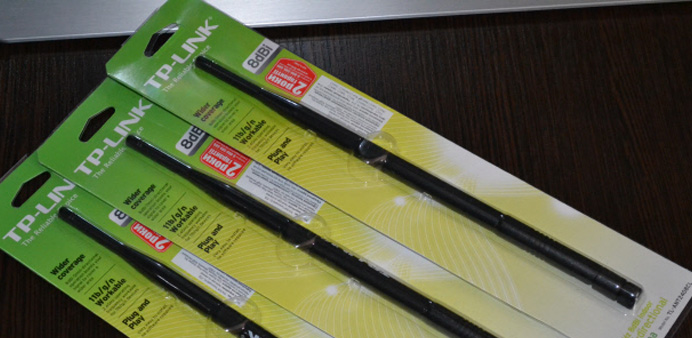
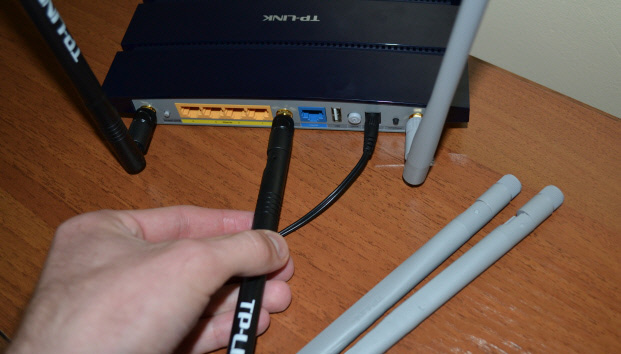
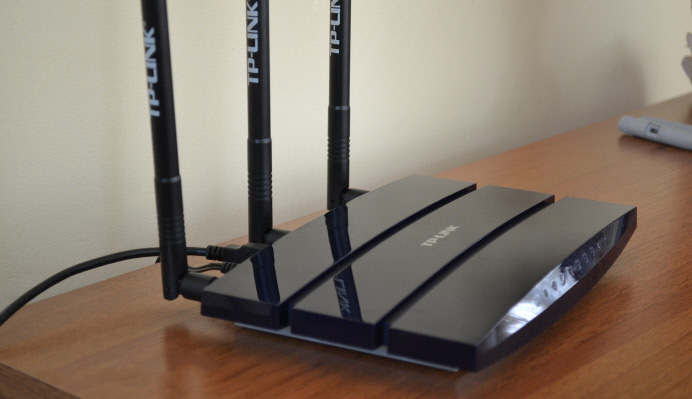
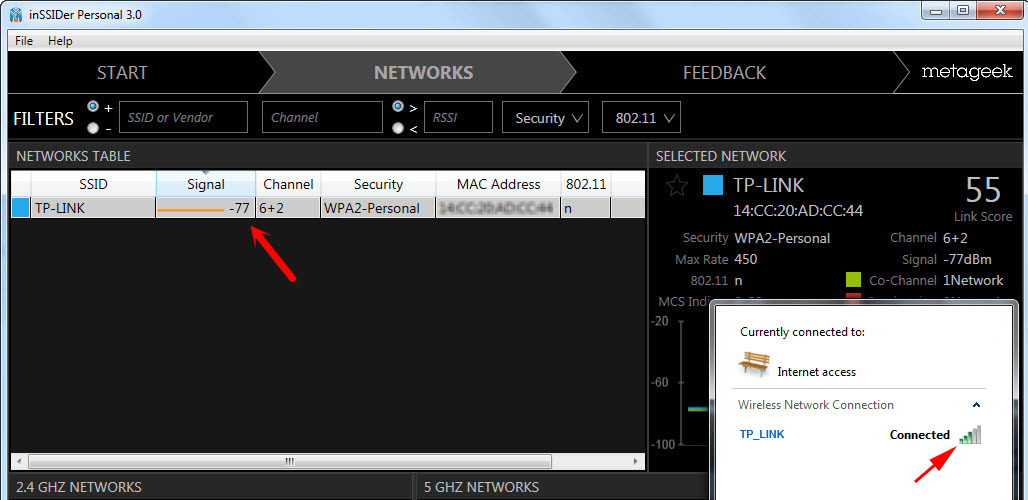
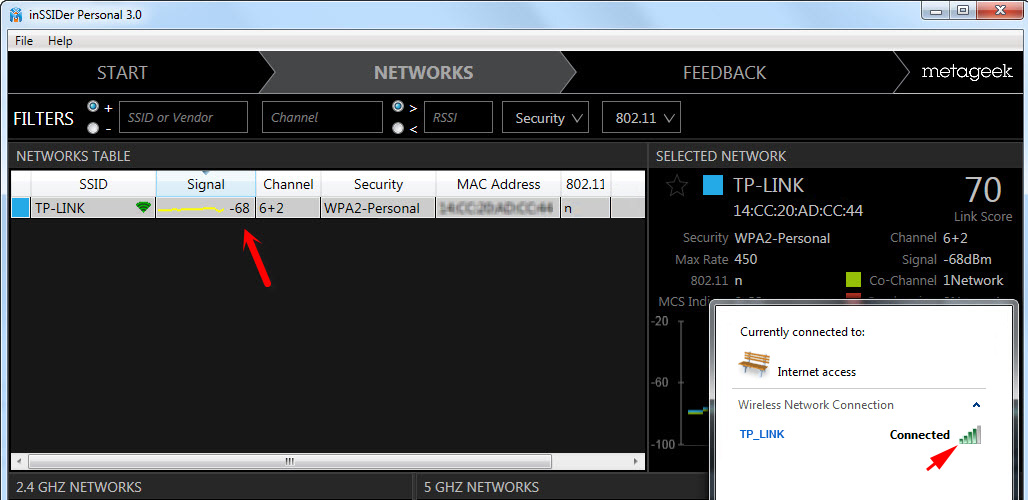
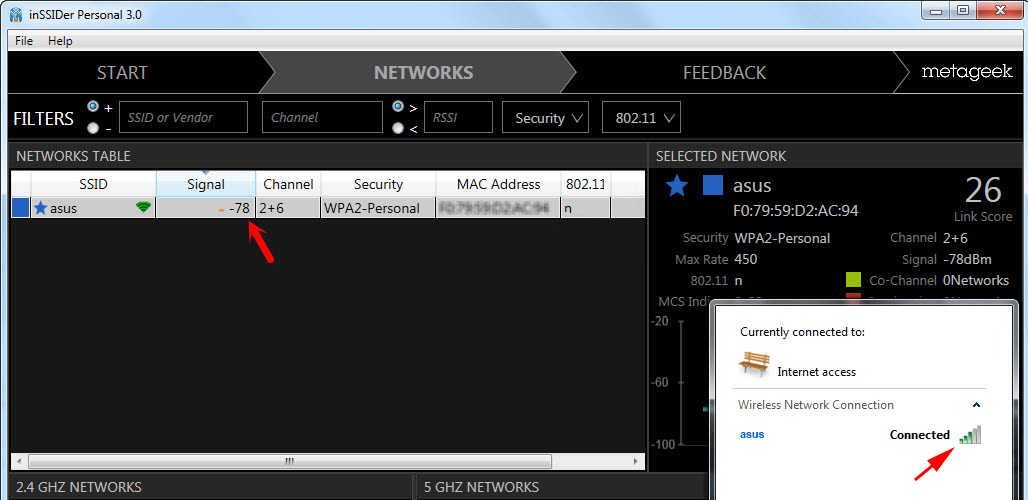
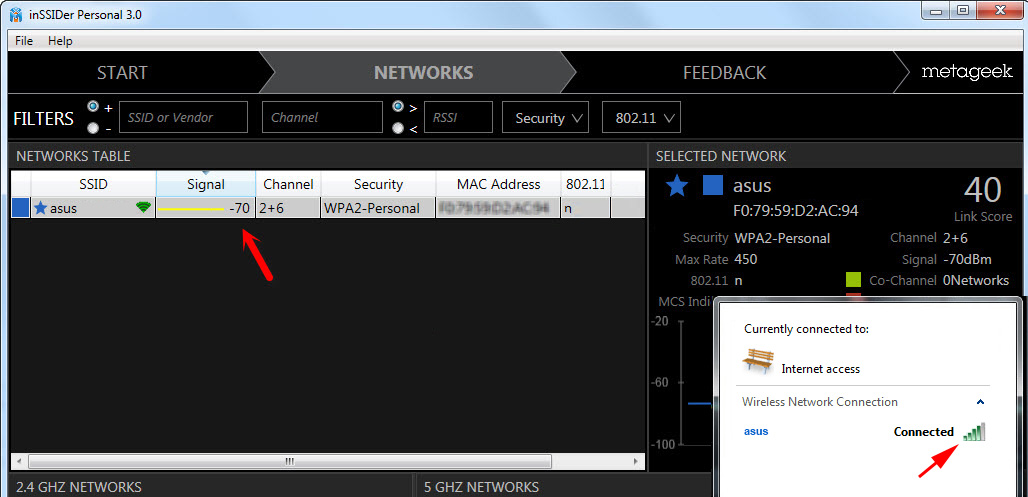
 TP-Link TL-WPA4220KIT: Review and Reviews ABOUT POWERLINE Adapters
TP-Link TL-WPA4220KIT: Review and Reviews ABOUT POWERLINE Adapters 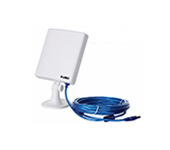 Kuwfi: Review, Setting, Reviews. Wi-Fi Adapter with a High Reception Reinforceement Coefficient
Kuwfi: Review, Setting, Reviews. Wi-Fi Adapter with a High Reception Reinforceement Coefficient  TP-Link TL-Wa850re: Review and Reviews
TP-Link TL-Wa850re: Review and Reviews